
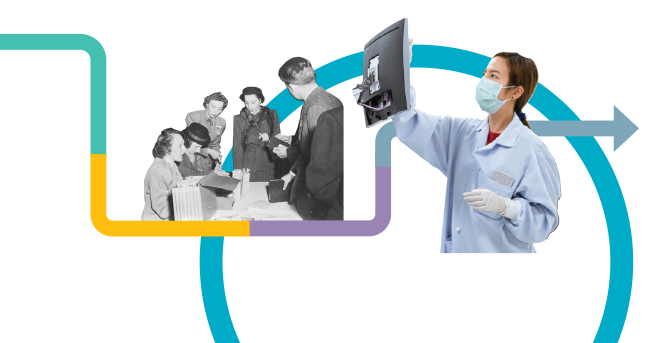
Immerse yourself in AABB's history by strolling through our timeline of groundbreaking advancements and compelling achievements. Throughout 2022, we will reveal pieces of our 75-year history along with stories, activities, and engagement opportunities.
Celebrate AABB’s milestone occasion with a commemorative issue of AABB News featuring a compilation of the history articles this year. This issue is provided free for members.
The AABB story begins after a tragic accident illustrates the need for coordination of blood banking practices. The newly formed association coalesces around this vital mission.
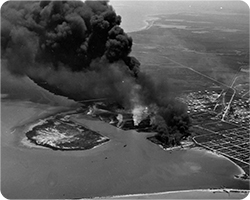 Freighter “Grandcamp” explodes while docked at Texas City wharf, setting off a chain of events leading to the development of AABB
Freighter “Grandcamp” explodes while docked at Texas City wharf, setting off a chain of events leading to the development of AABB
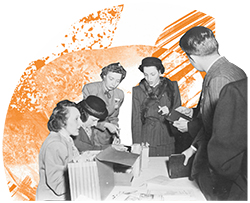 Minutes into the Blood Bank Institute – the first formal gathering of nationwide blood bankers – Marjorie Sauders introduces “…a request signed by 67 of you…which I would like to read: ‘The undersigned
urgently request that the Blood Bank Institute seriously consider at the earliest possible moment the formation of an American Association of Blood Banks.’”
Minutes into the Blood Bank Institute – the first formal gathering of nationwide blood bankers – Marjorie Sauders introduces “…a request signed by 67 of you…which I would like to read: ‘The undersigned
urgently request that the Blood Bank Institute seriously consider at the earliest possible moment the formation of an American Association of Blood Banks.’”
AABB hosts its first Annual Meeting.
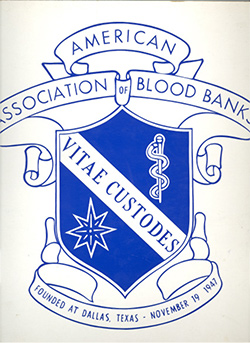 AABB is incorporated as a nonprofit organization in the state of Illinois establishment of American Association of Blood Banks.
AABB is incorporated as a nonprofit organization in the state of Illinois establishment of American Association of Blood Banks.
Carl Walter and W.P. Murphy Jr. introduce the plastic bag for blood collection, replacing breakable glass bottles with durable plastic bags, in one of the single most influential developments in blood banking.
Development of the refrigerated centrifuge in 1953 further expedites blood component therapy.
 Bernice M. Hemphill conceives the idea for a
blood clearinghouse.
Bernice M. Hemphill conceives the idea for a
blood clearinghouse.
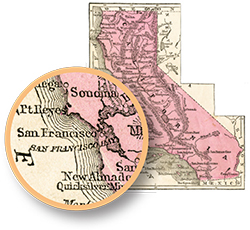 The first blood clearinghouse opens in San Francisco to service 10 blood banks in the California Blood Bank System.
The first blood clearinghouse opens in San Francisco to service 10 blood banks in the California Blood Bank System.
The National Clearinghouse Lifeline Program of AABB begins. The idea, submitted by Bernice Hemphill, calls for dividing the United States into five geographic districts with a blood clearinghouse to serve each region.
The first AABB technical manual is published, titled Technical Methods and Procedures for Blood Banks and Transfusion Services.
• 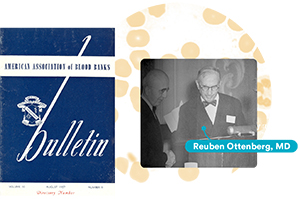 The AABB Bulletin is unveiled, edited by Marion Rymer, PhD, with contributions by members.
The AABB Bulletin is unveiled, edited by Marion Rymer, PhD, with contributions by members.
• The Blood Bank Technologist certification begins.
• The Specialist in Blood Banking certification begins.
• AABB hands out the Karl Landsteiner Award, the first award ever given at an AABB Annual Meeting. The award, given this year to Reuben Ottenberg, MD, recognizes original research resulting in an important contribution to the body of scientific knowledge.
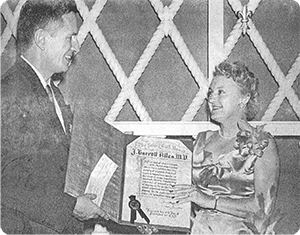 The John Elliott Memorial Award is established to honor John Elliott, DSc, who devised the closed system for the collection of blood into evacuated bottles. This award recognizes an individual who has given outstanding service to
AABB.
The John Elliott Memorial Award is established to honor John Elliott, DSc, who devised the closed system for the collection of blood into evacuated bottles. This award recognizes an individual who has given outstanding service to
AABB.
The AABB Inspection and Accreditation Program is created, and the first inspection for accreditation occurs at Providence Hospital Blood Bank in Detroit.
AABB, along with the Joint Blood Council, produces the first official Standards for a Transfusion Service.
AABB establishes its first central office in Chicago, better enabling it to focus its efforts and increase membership through direct mail and recruitment.
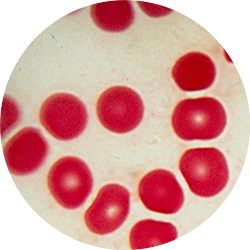 • The AABB Reference Laboratory Program is created.
• The AABB Reference Laboratory Program is created.
• The Rare Donor File begins.
• Max Perutz of Cambridge University deciphers the molecular structure of hemoglobin, the molecule that transports oxygen and gives red blood cells their color.
AABB unveils the first issue of TRANSFUSION, a scholarly journal that replaces the AABB Bulletin by expanding its educational purpose to include more scientific and technical research.
San Francisco is selected as the site of the National Clearinghouse offices. AABB requests 100% participation from member blood banks. The National Clearinghouse begins serving 2,965 patients in 621 blood banks.
The Ivor Dunsford Memorial Award is created to honor the British scientist and teacher, who made valuable contributions to blood group serology and genetics. This award recognizes outstanding technical performance.
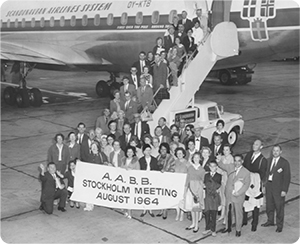 Plasmapheresis is introduced as a means of collecting plasma for fractionation.
Plasmapheresis is introduced as a means of collecting plasma for fractionation.
AABB/Fenwal Scholarships are created to promote interest in research, development and continuing education in the field of blood banking.
Throughout the 1970s and 1980s, AABB continues to drive patient and donor safety while advancing the field.
President Nixon proclaims January as the first “National Blood Donor Month” to honor voluntary blood donor and to help blood centers recruit new donors.
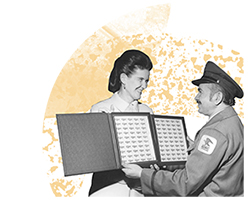 Postmaster General Winton M. Blount announces the design of a postage stamp to salute blood donors. AABB is the sole sponsor of the First Day of Issue preview ceremony for the 6-cent commemorative stamp on March 11.
Postmaster General Winton M. Blount announces the design of a postage stamp to salute blood donors. AABB is the sole sponsor of the First Day of Issue preview ceremony for the 6-cent commemorative stamp on March 11.
Hepatitis B surface antigen (HBsAg) testing of donated blood begins.
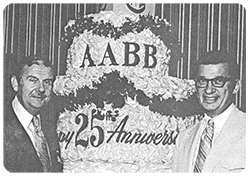 The process of apheresis is developed – used to extract one cellular component and returning the rest of the blood to the donor.
The process of apheresis is developed – used to extract one cellular component and returning the rest of the blood to the donor.
AABB moves its headquarters from Chicago to Washington, D.C., and celebrates its 25th anniversary.
Administrative and Scientific sections of the AABB Board are created.
The Morten Grove-Rasmussen Memorial Award is created to honor the physician who led the development of the AABB Reference Laboratory Program and Rare Donor File. It recognizes advances in the field of immunohematology and/or transfusion therapy at a practical level.
Bernice Hemphill is elected president of AABB, the first woman to hold this office.
A new anticoagulant preservative, CPDA-1, is developed, extending the shelf life of whole blood and red blood cells to 35 days, increasing the blood supply and facilitating resource sharing among blood banks.
Blood Replacement Exchange and Blood Cooperative are initiated.
An AABB Ad Hoc Committee recommends AABB incorporate the Clearinghouse as a subsidiary.
Northeast District office relocates to offices owned by the New York Academy of Medicine at 2 East 103rd Street, New York.
AABB now serve patients in more than 2,000 hospital transfusion services.
The National Clearinghouse ships nearly 200,000 units of blood between participating facilities.
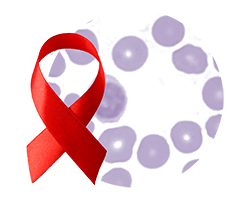 The first case of Acquired Immune Deficiency Syndrome (AIDS) is reported.
The first case of Acquired Immune Deficiency Syndrome (AIDS) is reported.
The Outstanding Administrator Award is established and renamed the Bernice Hemphill Award in 1991 to honor her commitment to AABB. The award recognizes an individual who has made significant contributions through the association to enhance the management of blood banks.
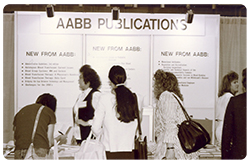 AABB holds its first international conference on parentage testing, which leads to the creation of the AABB Parentage Testing Program.
AABB holds its first international conference on parentage testing, which leads to the creation of the AABB Parentage Testing Program.
The National Blood Foundation (NBF) is created and charged with supporting AABB by raising money for, and monitoring the allocation of, scientific and administrative research grants.
AABB first becomes involved in issues concerning hematopoietic progenitor cells (HPCs) to update blood facilities about the special needs of bone marrow transplant patients for hematologic support.
The Donor Resources Achievement Award is established to recognize individuals who have made significant contributions nationally.
The National Clearinghouse endows the newly formed AABB Foundation with $500,000.
Human Immunodeficiency Virus (HIV) is identified as the cause of AIDS.
The National office and National Clearinghouse Lifeline Program move to Arlington, Va.
After 31 years of service, Bernice Hemphill steps down as chair of the AABB National Clearinghouse Program Committee.
Standard fee for platelets, cryoprecipitates and fresh frozen plasma (FFP) increases from $15 to $20.
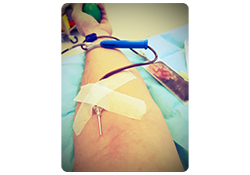 The first blood-screening test to detect HIV is licensed and quickly implemented by blood banks to advance the safety of the blood supply.
The first blood-screening test to detect HIV is licensed and quickly implemented by blood banks to advance the safety of the blood supply.
844 direct, auxiliary and affiliate participants serve patients in 1,873 transfusion services.
The National Clearinghouse participates with the U.S. Department of Defense on emergency preparedness program.
The National Clearinghouse changes its name to the National Blood Exchange (NBE). At this time, the NBE serves patients in 1,759 transfusion services with more than 400,000 transactions processed per year.
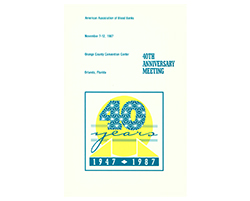 Two tests that screen for indirect evidence of hepatitis are developed and implemented: hepatitis B core antibody (anti-HBc) and the alanine aminotransferase test.
Two tests that screen for indirect evidence of hepatitis are developed and implemented: hepatitis B core antibody (anti-HBc) and the alanine aminotransferase test.
The first case of transfusion-transmitted Chagas’ disease is reported in the U.S.
AABB celebrates its 40th anniversary.
Human-T-Lymphotropic-Virus-I-antibody (anti-HTLV-I) testing of donated blood begins.
AABB will be adding to our 75 year timeline as we continue to celebrate throughout the year.
Do you have an AABB milestone, story or image to share? Please email us and attach your image(s) along with your name and contact information.
Please note that by sending photos, you give AABB permission to post or print them in AABB communication vehicles.
Do you have any cherished photos of yourself or AABB colleagues? Perhaps an Annual Meeting selfie? Maybe you and your staff in AABB t-shirts? Post your photos, videos or stories to your social media accounts and tag us: #75yrsAABB.


Show your career journey with an Instagram story template.
#75yrsAABB

Join in the AABB 75th Anniversary celebration with a sharp t-shirt or coffee mug. They make great gifts!
TRANSFUSION, AABB’s peer-reviewed journal, is observing the AABB’s anniversary year with a series of classic articles, each accompanied by a commentary on the article’s impact and how the science has evolved. The monthly series was introduced in a January editorial from Editor-in-Chief Richard Kaufman, MD.
The rich tradition of research by AABB members and their colleagues reported in the pages of TRANSFUSION is well worth the time to read. The January issue is a stellar example. The commentary by Rainier Storb, MD, discusses an article from 1962 by E.D. Thomas, MD, and J.W. Ferrebee, MD, titled “Prolonged storage of marrow and its use in the treatment of radiation injury.” Storb asks, “What was notewothy about the brief report?” and “Why did it matter?” (Spoiler alert: Thomas was awarded the Nobel Prize in 1990 for developing stem cell transplantation.)
The series will continue throughout 2022.
Take a look at some of the historical news items from our 75-year history.
Texas City Disaster Demonstrated Need for National Coordination
January 11, 2022
AABB History: The Formation of a New American Association of Blood Banks
February 17, 2022
AABB History: Major Strides Made in First Decade
March 17, 2022
What a Difference a Decade Makes. Or Not.
April 14, 2022
May 20, 2022
AABB History: Challenges and Change
June 17, 2022
AABB History: Embracing New Paradigms in the 1990s
July 19, 2022
AABB History: No Shortage of Significant Developments
August 3, 2022
AABB History: “But, Lo, There is Still Room Under Our Tent"
September 12, 2022